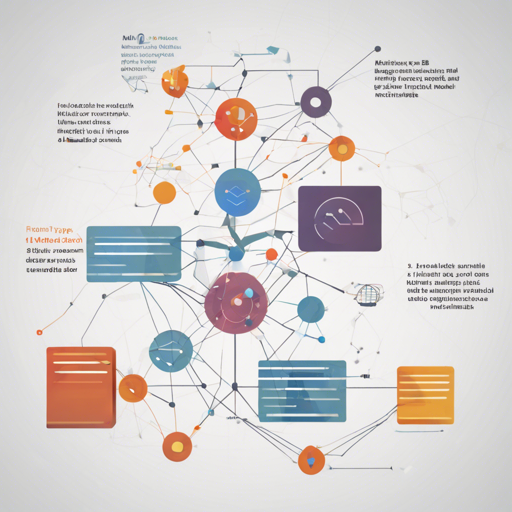Welcome to the exciting world of MolmoE 1B, a cutting-edge multimodal model developed by the Allen Institute for AI. In this guide, we’ll walk you through setting up and utilizing MolmoE effectively, ensuring your journey into vision-language models is smooth and successful.
What is MolmoE?
MolmoE-1B is part of the Molmo family of open-source vision-language models trained on a vast dataset called PixMo, which consists of 1 million carefully curated image-text pairs. With an impressive architecture of 1.5 billion active & 7.2 billion total parameters, MolmoE is designed to match the performance of advanced models like GPT-4V while remaining fully accessible to researchers and developers.
Quick Start Guide
Let’s dive into getting MolmoE running. Follow the steps below, and you’ll be working with the model in no time!
Step 1: Install Dependencies
- Begin by installing the necessary libraries:
pip install einops torchvisionStep 2: Run the Model
Next, set up your Python environment:
python
from transformers import AutoModelForCausalLM, AutoProcessor, GenerationConfig
from PIL import Image
import requests
# Load the processor
processor = AutoProcessor.from_pretrained(
'allenai/MolmoE-1B-0924',
trust_remote_code=True,
torch_dtype='auto',
device_map='auto'
)
# Load the model
model = AutoModelForCausalLM.from_pretrained(
'allenai/MolmoE-1B-0924',
trust_remote_code=True,
torch_dtype='auto',
device_map='auto'
)
# Process the image and text
inputs = processor.process(
images=[Image.open(requests.get('https://picsum.photos/id/237536354', stream=True).raw)],
text='Describe this image.'
)
# Move inputs to the correct device and make a batch of size 1
inputs = {k: v.to(model.device).unsqueeze(0) for k, v in inputs.items()}
# Generate output; maximum 200 new tokens; stop generation when endoftext is generated
output = model.generate_from_batch(
inputs,
GenerationConfig(max_new_tokens=200, stop_strings='endoftext'),
tokenizer=processor.tokenizer
)
# Only get generated tokens; decode them to text
generated_tokens = output[0, inputs['input_ids'].size(1):]
generated_text = processor.tokenizer.decode(generated_tokens, skip_special_tokens=True)
# Print the generated text
print(generated_text)
# This photograph captures a small black puppy...
Understanding the Code: A Relatable Analogy
Imagine you are a painter preparing to create a masterpiece. First, you need your tools: brushes (libraries), paints (dependencies), and canvas (your model). The steps outlined above guide you as if a mentor were advising you.
1. **Selecting Your Tools**: Just as you’d choose the right brushes, you’re installing essential libraries (einops & torchvision).
2. **Setting Up Your Canvas**: Loading the processor and model is like laying down your canvas, preparing your workspace for creativity.
3. **Gathering Inspiration**: The code where you process the image and text serves as your inspiration—like gathering references and ideas before painting.
4. **Bringing It All Together**: Finally, when you generate output, it’s akin to splashing vibrant colors onto the canvas; you’re creating a beautiful representation of your ideas and inspirations!
Troubleshooting
Even the best painters have to deal with unexpected challenges. Here are common issues you might face while working with MolmoE, along with solutions:
- Broadcast Error with Images: If you encounter a broadcasting error, your image may not be in RGB format. Convert it using the following snippet:
from PIL import Image
image = Image.open(...)
if image.mode != 'RGB':
image = image.convert('RGB')# Load the image
url = ...
image = Image.open(requests.get(url, stream=True).raw)
# Convert the image to grayscale to calculate brightness
gray_image = image.convert('L')
# Get the average brightness
stat = ImageStat.Stat(gray_image)
average_brightness = stat.mean[0]
# Define background color based on brightness
bg_color = (0, 0, 0) if average_brightness < 127 else (255, 255, 255)
# Make a new image with background color and paste the original
new_image = Image.new('RGB', image.size, bg_color)
new_image.paste(image, (0, 0), image if image.mode == 'RGBA' else None)
# Use new_image for processing
For more insights, updates, or to collaborate on AI development projects, stay connected with fxis.ai.
Conclusion
With MolmoE 1B at your fingertips, you have the power to harness the synergy between images and text like never before. Dive into this fascinating realm, experiment with the tools, and watch your creative endeavors flourish.
At fxis.ai, we believe that such advancements are crucial for the future of AI, as they enable more comprehensive and effective solutions. Our team is continually exploring new methodologies to push the envelope in artificial intelligence, ensuring that our clients benefit from the latest technological innovations.

